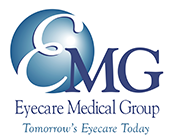
The American Academy of Ophthalmology (AAO) has named March Workplace Eye Wellness Month. The AAO aims to raise awareness this month about the importance of maintaining healthy eyesight in the workplace.
Since almost everyone spends a significant amount of time at work every day, it’s essential to prioritize eye health in the workplace. Whether you work in an office or a factory, eye injuries can happen anytime, and it’s crucial to take steps to prevent them.
Keep reading to learn four tips that can help you protect your vision and maintain optimal visual health in the workplace!
1. Take Regular Breaks
Prolonged use of digital devices such as computer screens can cause eye fatigue and strain. When focusing on a screen for an extended period, the natural reflex of blinking frequently reduces.
As a result, the eyes do not receive enough moisture to stay healthy, leading to dryness and blurred vision. Even slight blurriness can cause eye strain as the eyes work harder to compensate.
If you work on a computer for the majority of your day, every day, you may even develop dry eyes. To minimize eye strain and dry eye symptoms, it is recommended to take frequent breaks of at least 20 seconds every 20 minutes and shift your gaze away from the screen.
This will help replenish the tears on the front surface of your eyes, limit eye strain, and help improve the lubrication of your eyes.
2. Adjust Your Workstation
Properly setting up your workstation can make a significant difference in protecting your eyes from strain and fatigue. One crucial factor is ensuring that your computer monitor is positioned correctly.
Position your monitor so that the top of the screen is at or slightly below eye level, and adjust the brightness and contrast settings to a comfortable level. This will reduce the strain on your eyes, neck, and shoulders and promote better posture, preventing eye fatigue and discomfort.
Another way to adjust your workstation to protect your eyes is to reduce glare. Glare from nearby windows or bright lights can cause eye strain, so it’s important to minimize it as much as possible.
You can do this by positioning your monitor away from windows or bright lights, using curtains or blinds to block out excess light, or even wearing an anti-glare filter on your monitor.
3. Wear Protective Eyewear
Wearing protective eyewear is an essential safety measure in the workplace. If you work with hazardous materials or tools, such as chemicals, dust, or flying debris, it’s crucial to wear appropriate protective eyewear.
This can help prevent eye injuries, including corneal abrasions, chemical burns, or even blindness, and keep your eyes safe and healthy. When selecting protective eyewear, choose the right type for your job’s specific hazards.
Different types of protective eyewear offer varying levels of protection and comfort, so it’s essential to select the right one for your needs. Additionally, always follow the manufacturer’s instructions for use and maintenance to ensure that your eyewear is in good condition and functioning correctly.
4. Get Regular Eye Exams
Regular eye exams are vital to protecting your eyes in the workplace. By scheduling routine appointments with your eye doctor, you can help maintain healthy eyes and prevent many eye conditions.
It’s especially important to get regular eye exams if you spend long hours in front of a computer screen or in other visually demanding work environments. The eye doctor can detect and treat any eye problems early before they lead to more severe complications, such as vision loss or eye strain.
Prioritize eye health by scheduling regular eye exams and following the eye doctor’s recommendations for maintaining good eye health.
Do you want to learn more ways you can protect your eyes in the workplace? Schedule an appointment at Eyecare Medical Group in Portland, ME, today!





